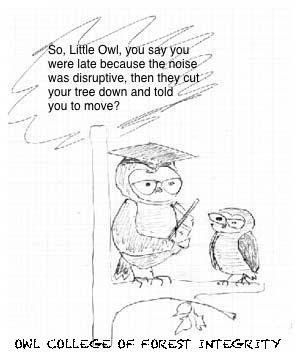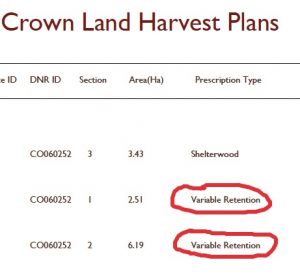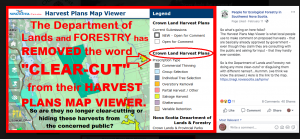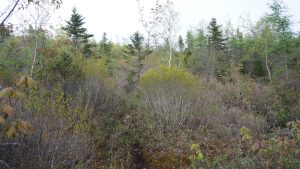UPDATE: MAR 14, 2019. From Forestry Maps: “…the department has included historic harvest plan submissions again on the HPMV. You will notice that the ability to view the archived harvest plan approval submissions are now a selectable layer in the layer list, labelled as “Archive”. You will find the HPMV has been updated as of today, March 14, 2019.” View HPMV. So it seems all historic harvest plan submissions back to 2016 are included in the new layer.
UPDATE MAR 7, 2019: Some clarification (or possibly not) from L&F
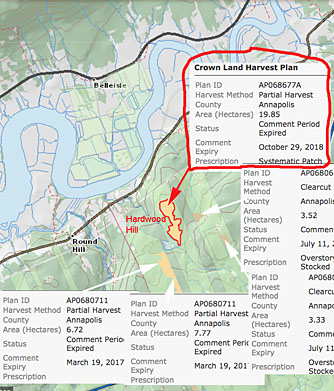 In a reversal of its decision announced on Jan 30, 2019 to remove “harvest plans that are no longer open to comments… from the map and the legend in order to simplify the mapping, speed up the application’s response time and adhere to the intention of the HPMV” (Post Jan 31, 2019), Forestry Maps sent out this message today (Mar 5, 2019) to subscribers to Harvest Operation Maps notifications:
In a reversal of its decision announced on Jan 30, 2019 to remove “harvest plans that are no longer open to comments… from the map and the legend in order to simplify the mapping, speed up the application’s response time and adhere to the intention of the HPMV” (Post Jan 31, 2019), Forestry Maps sent out this message today (Mar 5, 2019) to subscribers to Harvest Operation Maps notifications:
Continue reading



